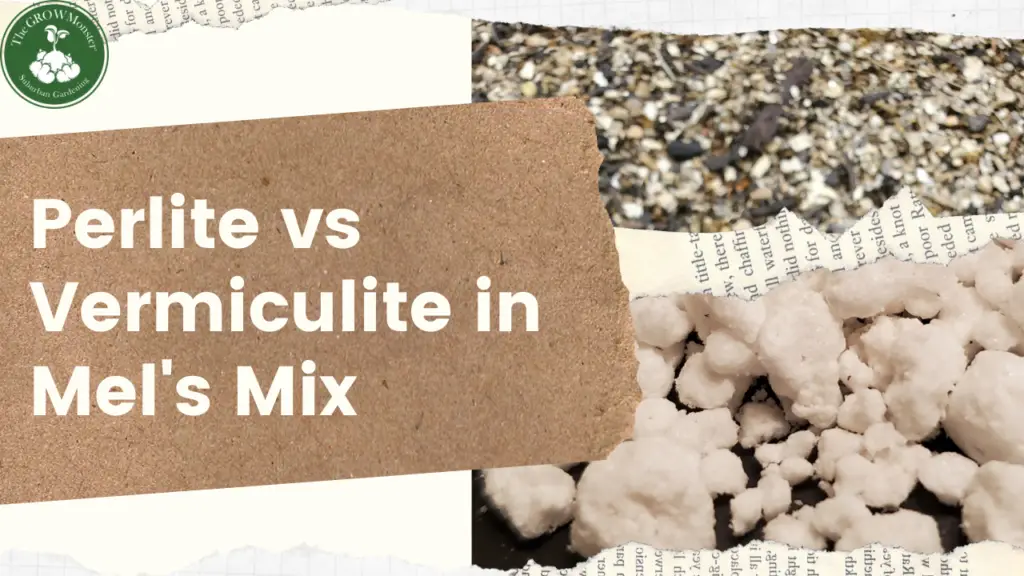Perlite vs vermiculite in Mel’s Mix, what’s the difference? As The Grow Monster’s level of interest in gardening began to grow, so did our need to know more about amending the soil to ensure the most successful growing experience for our plants. The need to amend our own gardening soil has led us to a better understanding of two popular minerals not only used to amend the soil, but root cuttings, and start seeds. While reading about square foot gardening, we had to decide between amending our soil with perlite or vermiculite.
The difference between Perlite and Vermiculite in Mel’s mix comes down to how you are going to use the soil you create. Perlite is more friendly to drier climate plants such as cacti and succulents, provides more soil aeration and drainage as opposed to vermiculite being more friendlier to plants requiring more moisture retention in the soil with less watering required. Both can be used for seed starting and rooting cuttings.
In this post, The Grow Monster highlights the similarities and differences between perlite and vermiculite in the following areas:
- Etymology
- Where it comes from
- How it’s made
- Shape, Texture, and Color
- pH Neutrality
- Sterility
- Health Risks
- Decomposition
- Water Retention, Drainage, and Aeration
- Seed starting
- Rooting Cuttings
- Other Uses
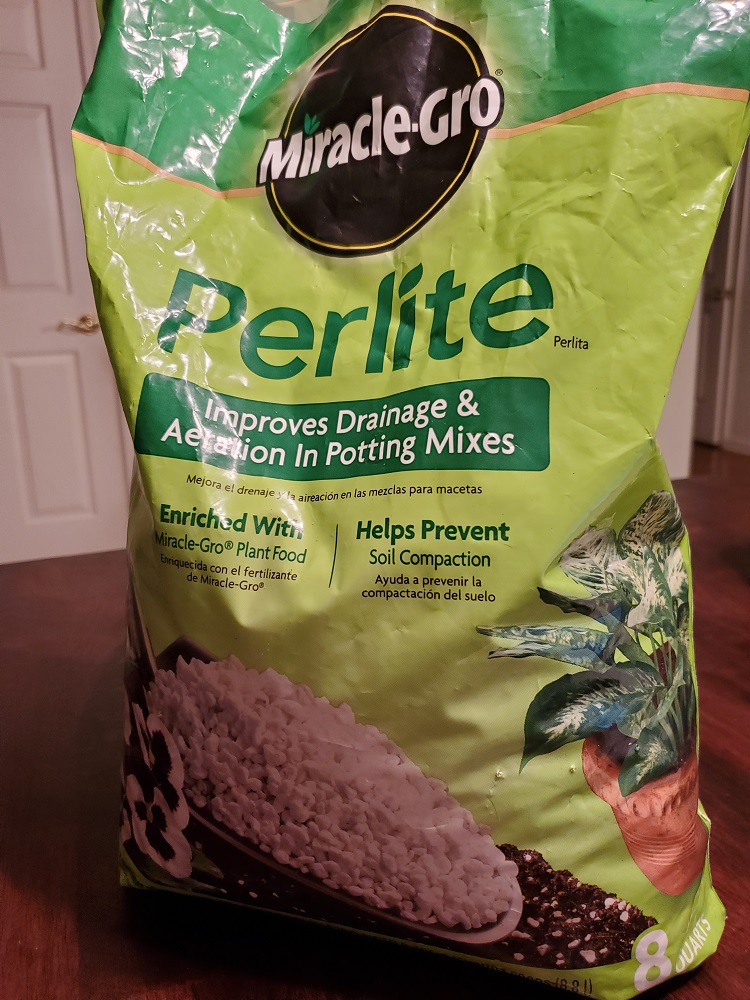
What is the Etymology of Perlite and Vermiculite?
Perlite comes from the word ‘perle’ which means ‘pearl’ in French. It is in reference to the white “pearly” luster of the perlite mineral.
Vermiculite comes from the word ‘vermi’ which means ‘worm’ in Latin. It is in reference to the worm-like structure that grows during the exfoliation process when heated.
Where do Perlite and Vermiculite Come From?
Perlite is a naturally occurring volcanic glass (obsidian) mineral mined from volcanic rock in places such as Armenia, Italy, Greece, Philippines, Mexico, Turkey, and the United States. Greece produces the most perlite in the world with the United States in a close second. Within the United States, the highest perlite producing state is New Mexico followed by Utah and Oregon with other states mining perlite a various capacities as well. You can view the world map of perlite-producing countries and learn more about this mineral by going here.
Vermiculite is also a naturally occurring silicate mineral (although non-volcanic) mined in places such as Russia, China, Japan, Zimbabwe, Brazil, Australia, South Africa, and the United States. The largest vermiculite operation in the world being in the Phalabowra district of the Republic of South Africa. Within the United States, there are three vermiculite mining operations with two being in South Carolina and one in Virginia. The Grow Monster would include Libby Montana on the list, but that mine became one of the largest environmental disasters in the US when it was declared a Superfund site in 2002 by the US Environmental Protection Agency (EPA). At this mine, vermiculite was found to have high-concentrations of asbestos in it. Thankfully, it is now closed. You can view the world map of vermiculite-producing countries and learn more about this mineral by going here.
How Are Perlite and Vermiculite Made?
Perlite requires some major heat (850-900 degrees Celsius / 1,560-1650 degrees Fahrenheit) to transform it into the product as we know it today. When it is mined as a raw volcanic glass (obsidian) mineral, it contains traces of water trapped inside the mineral itself. This water was trapped there as the lava flow cooled. It was discovered that when this raw material is heated to these high temperatures, the moisture in the mineral vaporizes quickly and explodes like pop corn from 7 to 16 times larger than it’s original volume.
Vermiculite also requires heat (above 300 degrees Celsius / 572 degrees Fahrenheit) to transform into the product as we know it today. It is mined as a silicate hydromica mineral and also expands up to 12 times its original volume when heated. They call this expansion process ‘exfoliation’ as it goes from being a dense ore into a porous lightweight material. This lateral expansion of the vermiculite during the exfoliation is likened to watching a worm form from the mineral when heated.
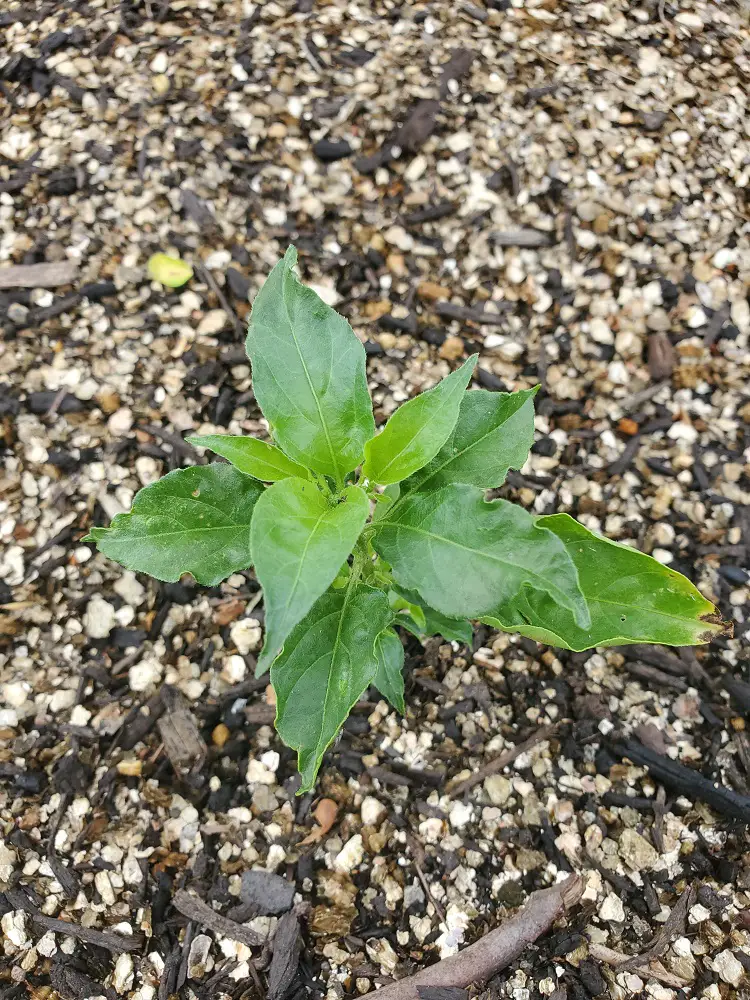
Perlite vs Vermiculite: What is the Difference in Shape, Texture, and Color?
Perlite is a rounded particle with porous edges, white pearl-like luster in appearance, and resembles a piece of styrofoam (but perlite is not styrofoam and should not be substituted with styrofoam for amending soils).
Vermiculite is a flakey, soft, spongy particle (when wet), and is brown or beige in color.
pH Neutrality in Perlite vs Vermiculite
Perlite is pH neutral and tends to be slightly more alkaline with a pH level between 6.6 and 7.5. Perlite is rated low in it’s ability to buffer pH changes with a Cation-Exchange Capacity (CEC) rating at 3 milliequivalents per 100 grams of soil.
Vermiculite is pH neutral when it comes to acidity has a pH level between 7 and 7.5. Vermiculite generally doesn’t alter the pH balance of the soil. Vermiculite is rated high in it’s ability to buffer pH changes with a high Cation-Exchange Capacity (CEC) rating at 100-150 milliequivalents per 100 grams of soil.
Sterility: Perlite vs Vermiculite
Perlite is sterile and disease free out of the bag. Because it is an inorganic mineral, it doesn’t decompose or become diseased by fungus or other microbes. However, perlite may come in contact with fungus and microbes once it is added to the soils as an amendment. If you intend to reuse the soil with perlite for another plant/or purpose and you know that the soil has been diseased, it can be sterilized using diluted hydrogen peroxide-water mixture, diluted bleach-water mixture, steam boiled, baked in an oven, or microwaved.
Vermiculite is also sterile and disease free out of the bag. Because it is an inorganic mineral like perlite, it doesn’t decompose or become diseased by fungus or other microbes. However, like perlite, vermiculite may come in contact with fungus and microbes once it is added to the soils as an amendment. If you intend to reuse the soil with vermiculite soil another plant/or purpose and you know that the soil has been diseased, it can be sterilized using diluted hydrogen peroxide-water mixture, diluted bleach-water mixture, steam boiled, baked in an oven, or microwaved.
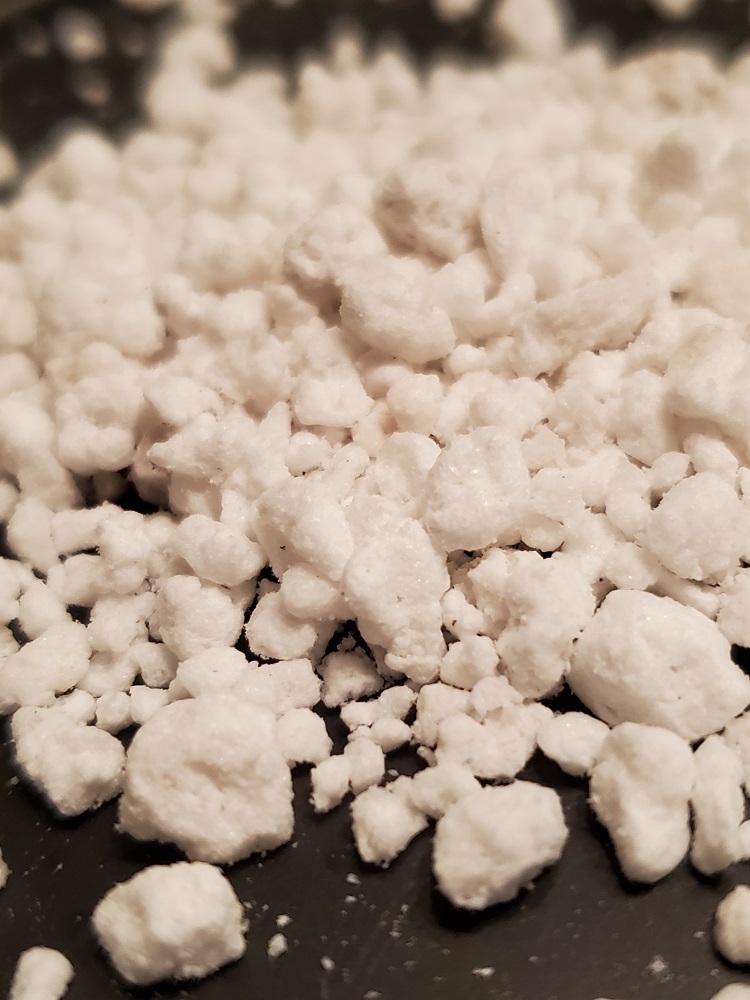
The Health Risks of Using Perlite vs Vermiculite in Mel’s Mix
Perlite is safe to use as current studies suggest that perlite does not pose any health risks to humans as outlined in the article “Health Effects of Perlite”, published by the Perlite Institute and can be viewed here for more information. When working with perlite, it does tend to generate dust and it is best to wear a face mask to reduce the inhalation of these dust particles. The Grow Monster also recommends lightly spraying down the perlite product with a water mist prior to use in order to reduce the dust particles in the air.
Vermiculite that is currently mined and sold commercially today is safe to use. However, that has not always been the case. It was discovered that vermiculite coming from the mine in Libby, Montana was found to be tainted with asbestos fibers. This mine was closed in 1991. As studies have shown, asbestos has proven to be carcinogenic as the dust fibers are extremely small and can embed themselves into the lungs when inhaled causing long-term respiratory illness and cancer. Since the Libby mine incident, protocols have been put into place to ensure that vermiculite on the market today does not contain asbestos. The Vermiculite Association has published a frequently asked questionnaire and can be found here. When working with vermiculite, it does tend to generate dust (not asbestos) and it is best to wear a face mask to reduce the inhalation of these dust particles. The Grow Monster also recommends lightly spraying down the vermiculite product with a water mist prior to use in order to reduce the dust particles in the air.
Decomposition of Perlite and Vermiculite
Perlite is not biodegradable and is not decomposed by microorganisms or fungi. However, it could eventually weather and break down into smaller and smaller pieces over time, but we’re talking a long time. For the purposes of gardening, perlite will remain a useful soil amendment for the life of the garden.
Vermiculite also is not biodegradable and is not decomposed by microorganisms or fungi. However, it also could eventually weather and break down into smaller and smaller pieces over time, but, again we’re talking a long time. For the purposes of gardening, vermiculite will remain a useful soil amendment for the life of the garden.
Perlite vs Vermiculite: Water Retention, Drainage, and Aeration
Perlite has a surface area which is porous and these pours help attract water. However, a particle of perlite can adhesively attract only so much water as it adheres to the outside surface area of the perlite particle itself. When there are no more pores for the water to be adhesively attracted to, the surface tension of the cohesively-held water molecules hits a breaking point and the excess water will just run off. Think of a bead of water sitting on the hood of a freshly-waxed car. The bead will keep it’s shape and form on the wax coating up to a point until too many other beads of water merge with it and needs to run down the hood, and off the car. This property of perlite lends itself well as a soil amendment for those plants that require good drainage such as desert plants, cacti, succulents, and rhododendrons that need well-drained soil, but need just enough water retained to get by. This property also lends itself well for aeration (exchange of gasses between the soil and atmosphere), allowing the soil to dry out between watering. The Perlite Institute has an interesting paper on perlite’s water holding capacity here if you want to learn more.
Vermiculite on the other hand, both attracts and absorbs water almost three to four times it’s weight much like a sponge. The cohesive and adhesive forces between water and vermiculite are much stronger. Water in and around the vermiculite particle tends to hang around much longer than on a perlite particle. Think of a wet sponge sitting on a counter top. With the adhesion between the water and vermiculate and the cohesion between the water molecules themselves, It will take a longer time before it dries out. This property of vermiculite lends itself well as a soil amendment for those plants such as roses, irises, forget-me-nots, dahlias, and vegetables that require lots of water as they are producing their fruits and flowers. This property also helps reduce the number of times you need to actively go out and water the plants. However, because vermiculite does retain water moisture longer, it is less effective than perlite at aerating the soil when fully saturated. The soil needs to wait longer before it can exchange gases with the atmosphere. These gases include oxygen for microorganisms and their byproduct carbon dioxide. Avoid over-watering to maintain better aeration when using vermiculite.
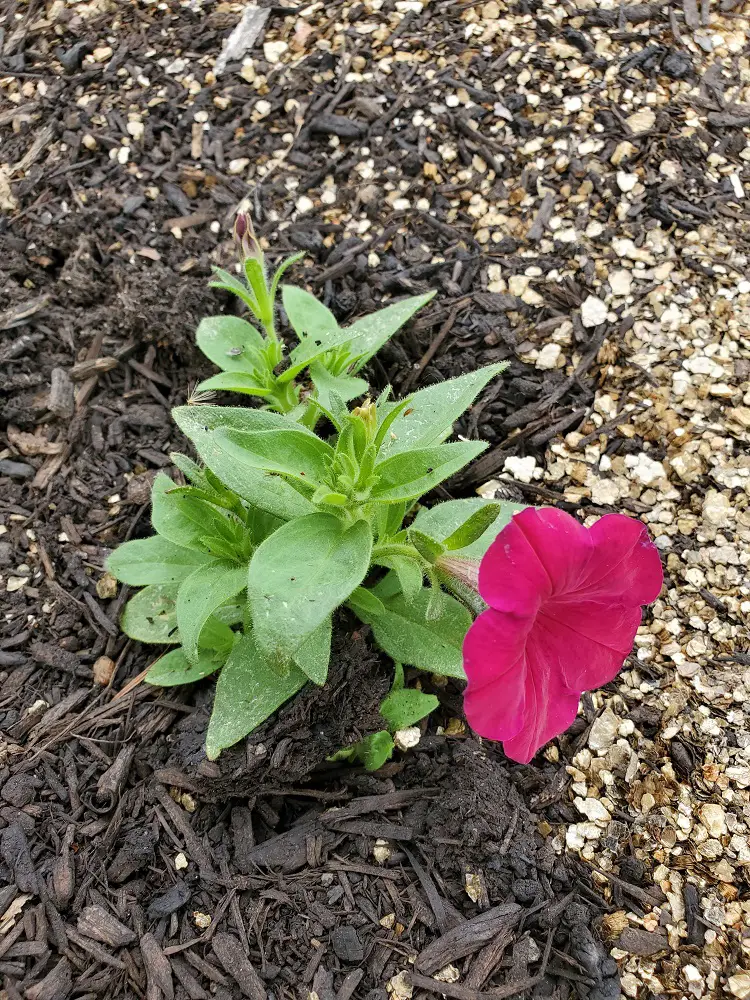
Seed starting in Perlite vs Vermiculite
Perlite can be used for seed starting either on its own or can be used in combination with other mediums (e.g, pine bark, peat moss, compost, worm castings). When used on it’s own, finer/medium grades (smaller particles) of perlite are required. If you can’t find smaller grades at the store, you might be able to grind up a larger grade perlite into smaller particles with a hammer. Smaller particles are needed to ensure enough moisture is retained/maintained for the seeds. Again, that is if you are using perlite by itself. Seeds requiring both moisture and aeration may germinate faster when perlite is included in the mix as opposed to no perlite at all. After they have sprouted with their true leaves, be sure to handle them delicately when transplanting them to their new locations. Perlite will tend to break free while moving and expose the roots, so be careful during the transplant.
Vermiculite can also be used for seed starting either on its own or can be used in combination with other mediums (e.g, pine bark, peat moss, compost, worm castings). Like perlite, seeds requiring more moisture may germinate faster when vermiculite is included in the mix as opposed to no vermiculite at all. After they have sprouted with their true leaves, be sure to handle them delicately when transplanting them to their new locations. Like perlite, vermiculite will tend to break free while moving and expose the roots, so be careful during the transplant.
Rooting Cuttings in Perlite vs Vermiculite
Perlite can be used by itself or in conjunction with other rooting mixes (e.g., sand, peat moss, vermiculite) for rooting a cutting. If using perlite alone, moisten the perlite by spraying it with some water. Dip the cutting into a rooting hormone. Place the moistened perlite around the cutting and cover with transparent plastic bag so as to retain enough humidity around the top half of the cutting and not dry out. Place the cutting in in-direct sunlight. Spray often enough daily to keep the perlite moist, but not so much that water pools at the bottom of the perlite container. Once the cuttings have developed roots, they will need to be placed into a more nutrient-rich potting soil. Be sure to handle them delicately when transplanting them to their new locations. Perlite will tend to break free while moving and expose the roots, so be careful during the transplant.
Perlite provides good drainage and aeration for cuttings and helps prevent root-rot over other methods. Cuttings from plants that thrive in drier climates such as cacti and succulents would benefit from this method when it comes to rooting.
Vermiculite by itself will often be too wet for cuttings if it is not used in conjunction with other rooting mixes (e.g., sand, peat moss, perlite). Some cuttings might be able to tolerate the high moisture provided by vermiculite alone and you can learn which ones those are by trial and error. Though, for best results, add something extra to the rooting mix to improve the aeration and drainage (e.g., sand, peat moss, perlite). You will want to begin by moistening the vermiculite / mix by spraying it with some water. Place it loosely and lovingly into a container with drainage at the bottom (don’t compact it). Dip the cutting into a rooting hormone. Place the moistened vermiculite mix around the cutting and cover with transparent plastic bag so as to retain enough humidity around the top half of the cutting and not dry out. Place the cutting in in-direct sunlight. Spray often enough daily to keep the vermiculite moist, but not so much so that water pools at the bottom of the vermiculite mix container. Once the cuttings have developed roots, they will need to be transplanted into a more nutrient-rich potting soil. Be sure to handle them delicately when transplanting them to their new locations. Like perlite, vermiculite will tend to break free while moving and expose the roots, so be careful during the transplant.
A vermiculite rooting mix provides good moisture retention and can probably go longer between watering’s as compared to perlite. However, it does not provide the same level of drainage and aeration that perlite provides and the risk of root rot is greater. Water-loving plant cuttings will enjoy the vermiculite mix more as opposed to the better aeration and drainage provided by perlite.
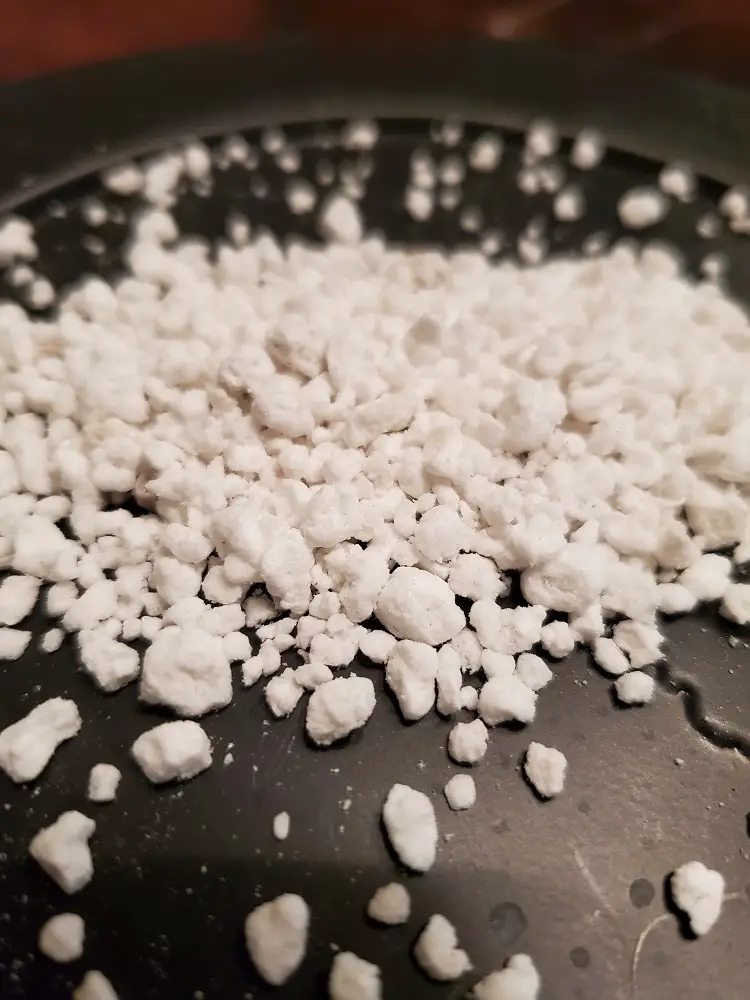
Other Uses of Perlite and Vermiculite
Perlite has other uses outside of the garden as well. There are a wide range of applications that use the perlite mineral which includes serving as a filler media for pharmaceuticals, food products, polishes, soaps, mortars, pipe insulations, ceiling tiles, refractory bricks, roof insulation boards, gypsum boards, underfloor insulation, masonry construction and cement.
Vermiculite also has other uses outside of the garden and with similar uses as perlite. Applications of the vermiculite mineral include acting as a filler for packaging/shipping materials, building boards, anti-drumming coatings, plaster, increases fire resistance of polymers and foams, increases performance of gaskets and rubber seals, used in the manufacture of animal feed (yes, apparently it serves as a medium for carrying nutrients, is safe, and is eaten by the animal), and is also added as a filler to cement.
Conclusion
The Grow Monster recognizes that for the best growing experience, an in-depth understanding between perlite and vermiculite was necessary before moving forward with using them as soil amendments to our home-made compost. You can read our post about the different ways to compost here. The Grow Monster found that perlite is more friendly to drier climate plants such as cacti and succulents, provides more soil aeration and drainage as opposed to vermiculite being more friendlier to plants requiring more moisture retention in the soil with less watering required. The Grow Monster also found that both can be used for cuttings / seed starting where they can be used in conjunction with other media. We look forward to working with it more ourselves to see what works best for us. We’d also like to know what has or has not worked best for you when using these minerals? Please leave your comments below. If you’d like to learn more about creating your own compost using perlite or vermiculite, read our article on 7 ways to create your own compost.

